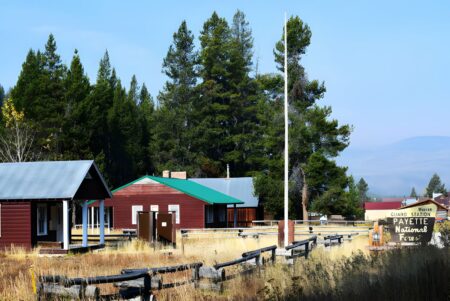
For those who love the outdoors, travel plans need to include behaviors particular to the region. If you’re traveling to a new forest, you don’t take firewood from another region to the campsite; you can transfer destructive insects into forests that are vulnerable. In the unique desert landscape of the southwest, your behaviors can damage fragile soil and habitats.
1. Plan Ahead
When headed to the hiking trails around Sedona, make sure you carry water for your whole clan. Mornings and evenings can be cool; midday can be sunny and hot. You’ll need both a jacket and a hat. Do your best to be as self-contained as possible. Carry a GPS tool and never hike in brand new shoes, even if you’re taking an easy trail.
2. Focus on Durable Surfaces

The existing trails around the Sedona area are routing tools for hikers, wildlife and water. Stick to existing trail surfaces, including those covered with sand and gravel. Park your vehicle on these durable surfaces; desert plants are fragile. If you park your car on top of fragile desert soil, the weight can break the soil crust, and the seeds may not be able to sprout.
3. Pack in What You Need and Pack Out Your Garbage
Note where the trash bins are on your hike or camping trip so you can pack what you need and throw out every scrap of trash. If your campsite has a fire ring and you’re allowed to have a fire, saving trash scrap as a fire starter can work with the right materials. Never leave unburned trash or food scraps in your fire ring when you leave camp. The apple core from the fruit grown in Washington State is not good food for the wildlife of the desert.
On Human Waste: There are regions around Sedona where you can dig a 6 to 8-inch cathole to bury your waste. If you plan to use this method of getting rid of your waste, do be aware that you need to be 200 feet from your campsite and any water source. Be prepared to pack out toilet paper or hygiene wipes after using a cathole. Because the desert soil is fragile, use existing facilities whenever possible.
4. Fires
Whether you’re free camping or staying in a developed site, follow the 7 principles of Leave No Trace and do not start a fire until you know it is allowed. If your campsite has no fire ring, you can’t have a fire there. If your campsite has a fire ring, you need to leave it where it is.
5. Leave Markers and Artifacts
You may see stacked rocks or cairns along the trail. These are markers for hikers, some of whom are hiking longer or combined trails. If you change, relocate or break down a cairn, you may be responsible for another hiker becoming lost and falling into danger. Do not alter cairns. You may see bones or prehistoric structures along the trail. Leave these for other hikers and travelers in the future.
When you see a symbol or a marking on a tree or a rock, it may be tempting to carve your own. However, in the 21st century, we have other options. Take a photo of yourself with the ancient artifact. Don’t carve into existing plants or trees and risk opening that plant to disease.
6. Respect Wildlife
Before you travel with your pets, make sure that they are leashed, so they do not injure a wild creature or risk injury in the company of a wild animal. If your dog is off-leash and has a wonderful day chasing squirrels and rabbits, you will give your dog food and water before crawling into your sleeping bag. The animals around your campsite will be stressed by the experience. They may end up dehydrated and hungry. Their chance of survival could actually be altered because you didn’t leash your dog. Leash your pets.
7. Share the Space
Keep an eye out for other travelers. Hikers working on climbing the hill know the right way. If you’re on an equestrian trail, yield to the horses. Should you find yourself on a trail that doesn’t allow bicycles for a short stretch, walk your bike. In every case, cyclists need to yield to hikers.
So, these were a few tips that will help you travel green. You can use this to ensure that you play your part in keeping our planet safe.







